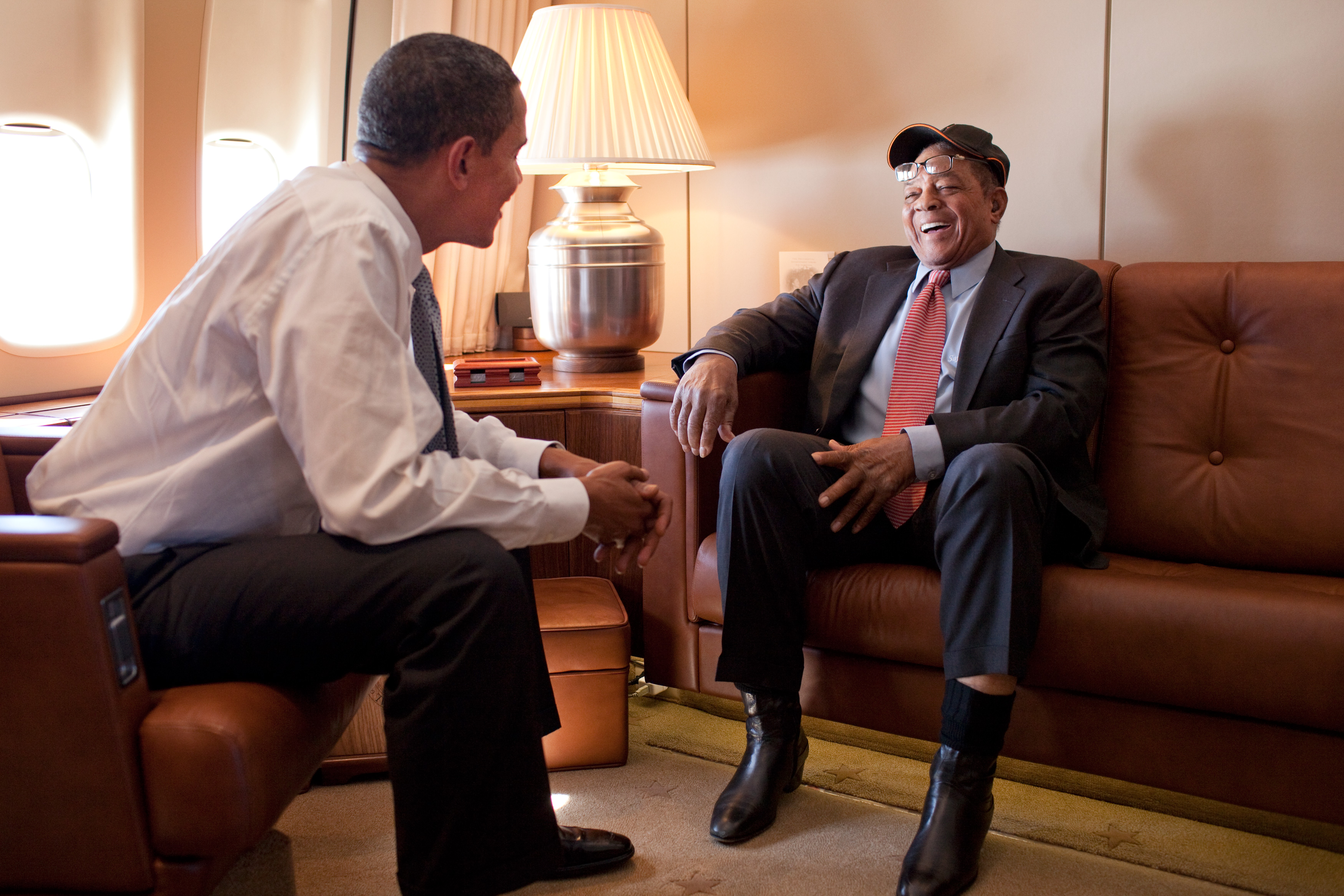 |
| White House (Pete Souza) / Maison Blanche (Pete Souza), Public domain, via Wikimedia Commons |
“It is with great sadness that we announce that San Francisco Giants Legend and Hall of Famer Willie Mays passed away peacefully this afternoon at the age of 93,” the Giants announced on X (formerly known as Twitter).
Mays, nicknamed “The Say Hey Kid,” had a professional baseball career that spanned four decades, beginning with the Negro Leagues in the late 1940s and ending with the New York Mets in 1973. He spent 21 years with the New York Giants, who would later move to San Francisco.
Born on May 6, 1931, in Westfield, Alabama, Mays was introduced to baseball by his father, Cat Mays, a semi-pro player on several local Black teams. By high school, Mays excelled in several sports and began his professional baseball career in 1948 with the Birmingham Black Barons of the Negro Leagues.
It is with great sadness that we announce that San Francisco Giants Legend and Hall of Famer Willie Mays passed away peacefully this afternoon at the age of 93. pic.twitter.com/Qk4NySCFZQ
— SFGiants (@SFGiants) June 19, 2024
Mays signed with the Giants in 1950 after graduating high school and was called up to the majors in May 1951 after barely a year in the minors. He debuted on May 25, 1951, and hit his first home run against the Boston Braves in his fourth game. He won Rookie of the Year that season, the first of many accolades.
I’ll never forget this day when I walked in and heard, “that’s that boy who wears his hat like this.”
— CC Sabathia (@CC_Sabathia) June 19, 2024
RIP Willie Mays. You changed the game forever and inspired kids like me to chase our dream. Thank you for everything that you did on and off the field. Always in our hearts… pic.twitter.com/Xv2ZHbKFvt
Mays was a true five-tool player, excelling in speed, throwing, fielding, hitting for average, and hitting for power. He had a career triple-slash line of .301/.384/.557, with 660 home runs, 525 doubles, and 338 stolen bases. He led the National League in stolen bases and home runs four times each. Over 24 seasons, he grounded into just 45 double plays.
In May 2021, 10 hits were added to Mays’ career total when Negro League stats were officially integrated into MLB’s historical record. His home run total was not adjusted due to the lack of box scores from those games.
He leaves us with a lasting reminder: to work hard and find joy in this great game, and this extraordinary life. Say Hey, Willie Mays. The best there ever was. 💐 pic.twitter.com/9QnpsDZM9B
— SFGiants (@SFGiants) June 19, 2024
Mays missed most of 1952 and all of 1953 due to military service during the Korean War but returned in 1954 to have the greatest season of his career, hitting .345/.411/.667 with 41 home runs. He won MVP and was selected to the All-Star Game. Mays finished in the top six of MVP voting from 1955 to 1966, winning MVP again in 1965 and coming in second twice. He was selected to the All-Star Game 20 times, winning All-Star MVP in 1963 and 1968, and also won 12 Gold Gloves.
Mays’ most iconic play came in the 1954 World Series, known simply as “The Catch.” In Game 1, he made a stunning over-the-shoulder catch off Vic Wertz's drive and prevented any runners from scoring with a quick throw to second base.
Mays began a slow decline in the late 1960s, though he still posted a National League-best .425 OBP in 1971. The Giants traded him to the Mets in May 1972, and he played his final season in 1973.
After retiring, Mays became the Mets hitting coach until 1979, when he terminated his baseball contract to become a greeter at an Atlantic City hotel and casino. Then-commissioner Bowie Kuhn banned Mays from baseball due to the gambling connection, but he was reinstated in 1985 by Peter Ueberroth, Kuhn’s successor.
The Giants, who retired Mays’ number in 1972, signed him to a lifetime contract in the 1990s, making him a permanent special assistant to the president. He spent years visiting the Giants’ minor-league teams, attending spring training, and making appearances on behalf of the club.
Mays is survived by his son, Michael. His wife, Mae Louise Allen Mays, died in 2013 following a long battle with Alzheimer’s disease.
Mays was elected to the Hall of Fame in 1979, his first year of eligibility. Though he wasn’t a unanimous choice, he received 94.68% of the vote.
In 2015, Mays received the Presidential Medal of Freedom, the nation’s highest civilian honor, from President Barack Obama.

No comments:
Post a Comment